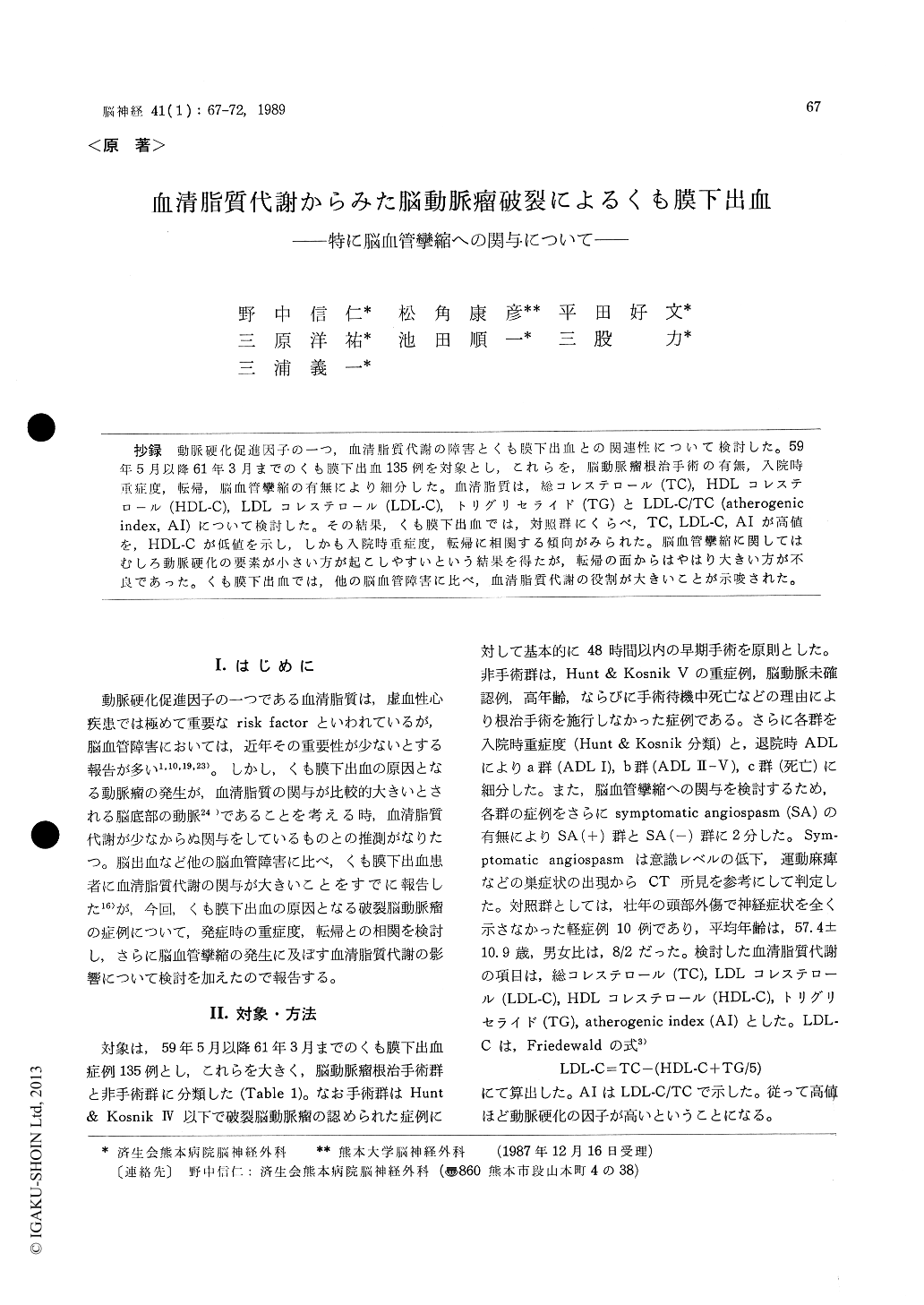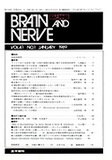Japanese
English
- 有料閲覧
- Abstract 文献概要
- 1ページ目 Look Inside
抄録 動脈硬化促進因子の一つ,血清脂質代謝の障害とくも膜下出血との関連性について検討した。59年5月以降61年3月までのくも膜下出血135例を対象とし,これらを,脳動脈痛根治手術の有無,入院時重症度,転帰,脳血管攣縮の有無により細分した。血清脂質は,総コレステロール(TC),HDLコレステロール(HDL-C),LDLコレステロール(LDL-C),トリグリセライド(TG)とLDL-CITC (atherogenicindex, AI)について検討した。その結果,くも膜下出血では,対照群にくらべ,TC, LDL-C,AIが高値を,HDL-Cが低値を示し,しかも入院時重症度,転帰に相関する傾向がみられた。脳血管攣縮に関してはむしろ動脈硬化の要素が小さい方が起こしやすいという結果を得たが,転帰の面からはやはり大きい方が不良であった。くも膜下出血では,他の脳血管障害に比べ,血清脂質代謝の役割が大きいことが示唆された。
Lipid metabolism, which can be an important factor for arteriosclelosis, was studied in the pa-tients with subarachnoid hemorrhage due to rup-tured intracranial aneurysm.
Total cholesterol, LDL-cholesterol, HDL-cholest-erol, triglyceride and Atherogenic Index were determined in 131 patients, who were admitted to our hospital since May, 1984 to March, 1986. Those results were analyzed in relation to the grading on admission, outcome and especially cerebral angiospasm.
Serum levels of LDL-cholesterol and Atheroge-nic Index tended to correlate with the grading on admission. Total cholesterol, Atherogenic Index well correlated with the recovery of the patients and the activity of daily life.
In this study, we especially examined the re-lationship with cerebral angiospasm. The results suggested that the role of cerebral arteriosclerosis caused by disturbance of lipid metabolism was rather negative to the development of cerebral angiospasm after subarachnoid hemorrhage.

Copyright © 1989, Igaku-Shoin Ltd. All rights reserved.


